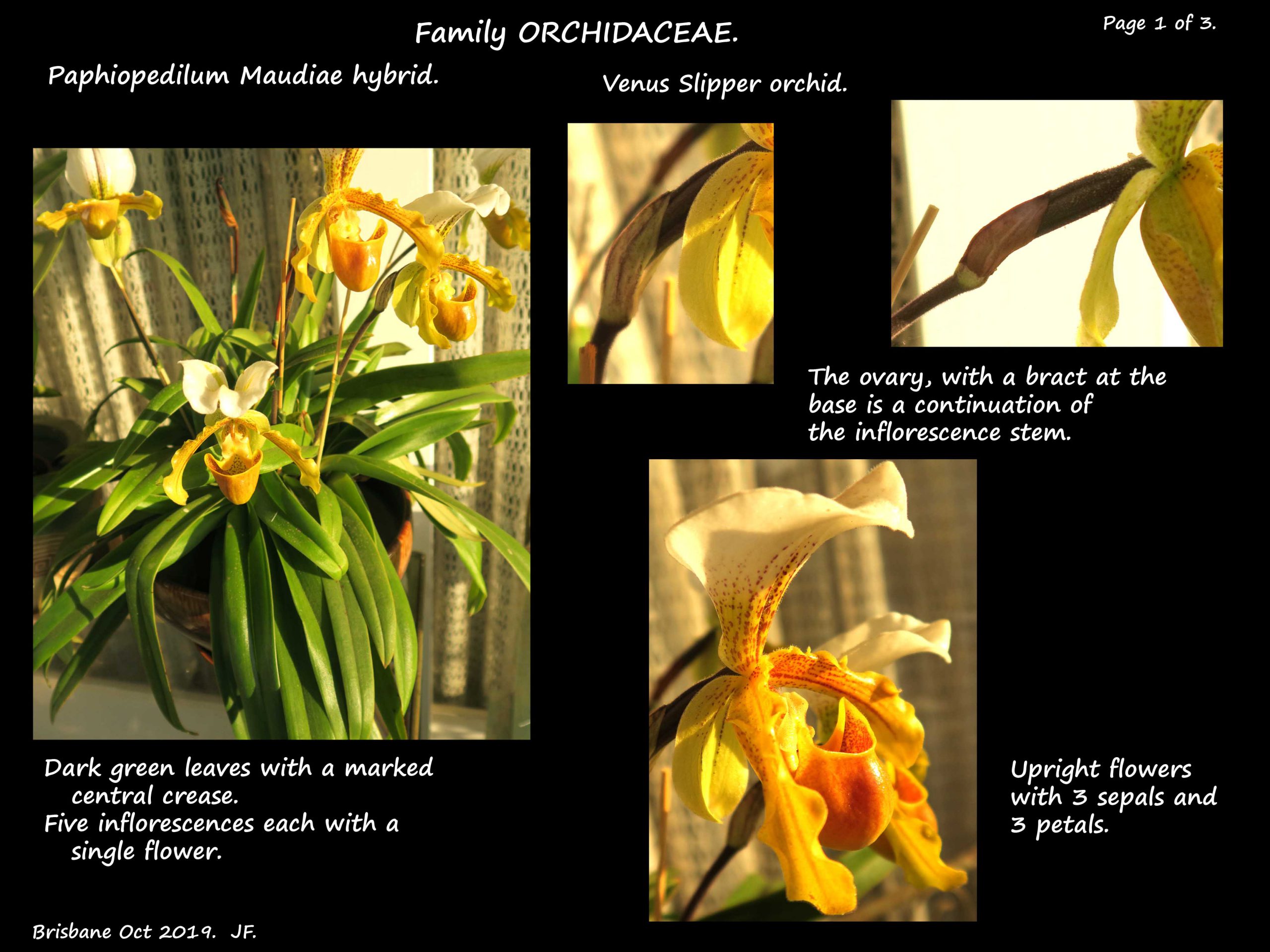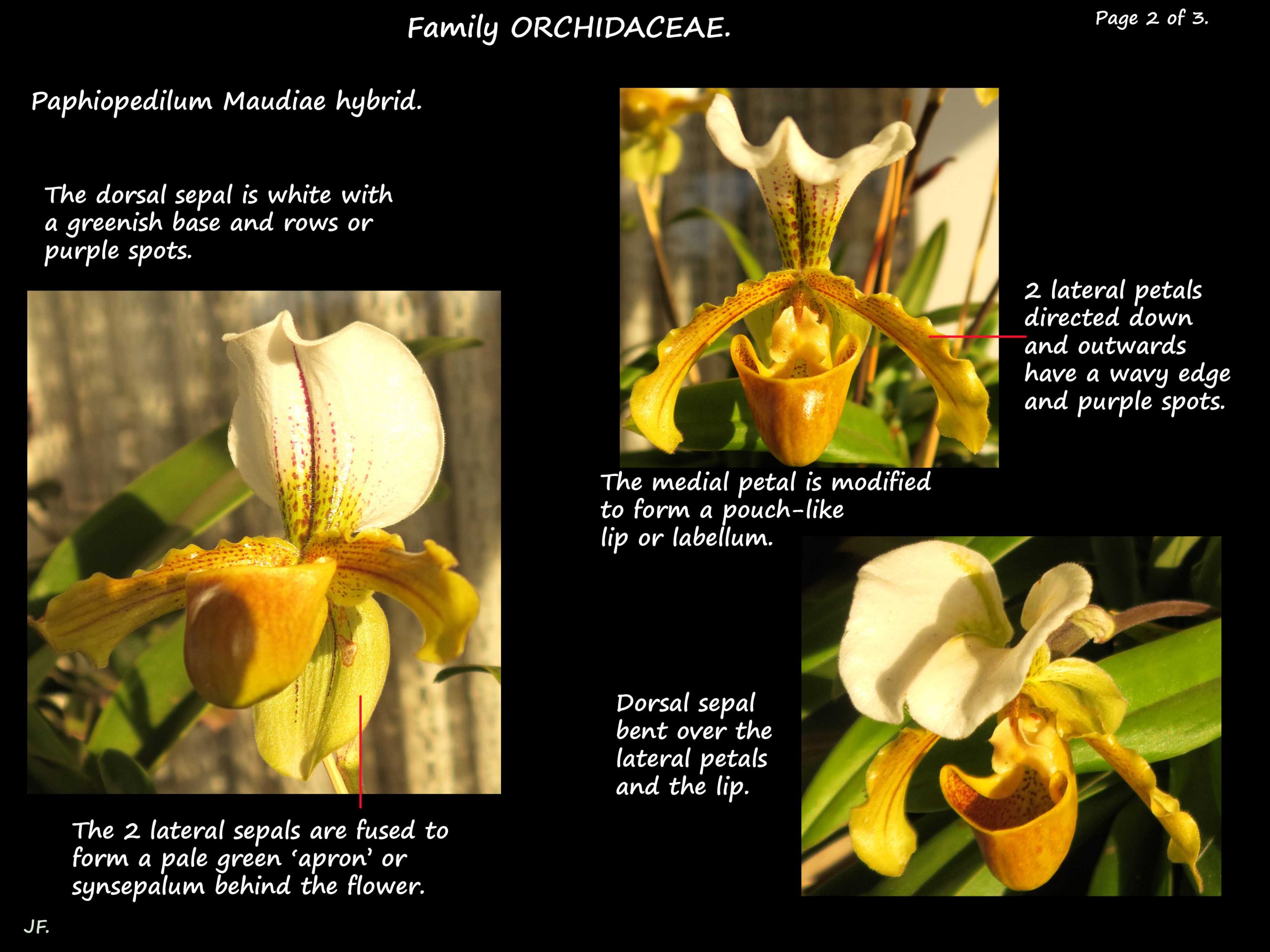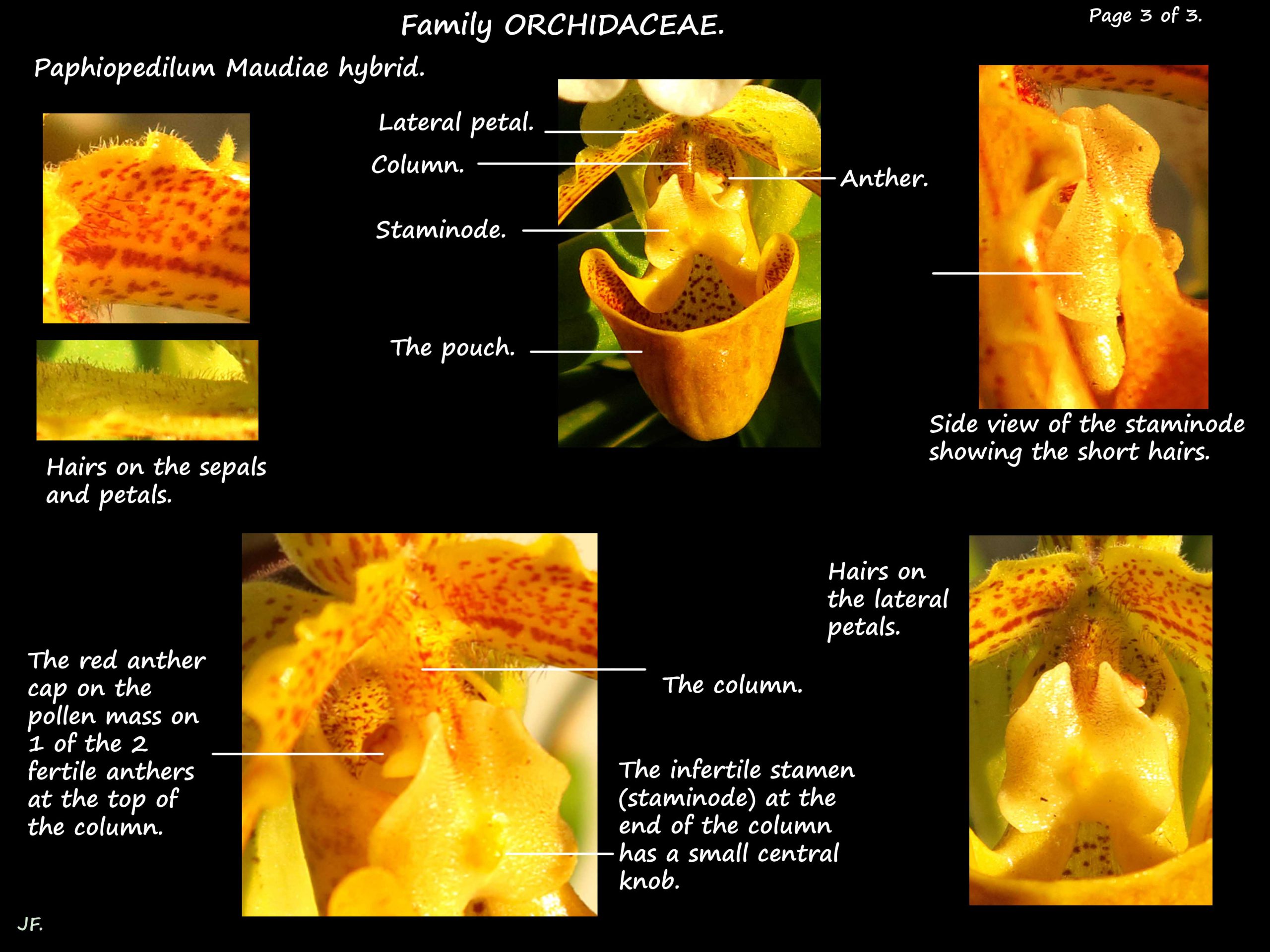Paphiopedilum.
Family Orchidaceae > Subfamily Cypripedioideae.
Lady’s slipper or just Slipper orchids are characterised by having the medial petal in
the form of a pouch plus 2 fertile anthers.
There are 165 to 185 species plus many hybrids.
Inflorescences hold 1 to many flowers.
There are five genera – Cypripedium has 52 species, Paphiopedilum (70 to 100), Phragmipedium
(20 to 26 species), Mexipedium and Selenipedium that can be up to 5 m high.
Paphiopedilum Maudiae hybrid.
Plants are mostly terrestrial with some epiphytes.
They are sympodial orchids with underground stems (rhizomes) and fine roots.
From the rhizome short, above ground stems each hold a few basal leaves.
The darkish green, arching leaves are deeply grooved down the centre.
Those from cooler climates have plain green leaves, from warmer areas they may be mottled.
Inflorescence stems are up to 60 cm high with 1 apical flower.
The upright flowers (not resupinate) have a perianth with 3 sepals and 3 petals.
The dorsal sepal is larger than the 2 laterals.
It is roundish with a narrow base and held upright or angled over the other flower parts.
It is white with a greenish base and purple spots.
The 2 lateral sepals are fused into a synsepalum that hangs down behind the pouch.
The two lateral petals, angled down and out, have a wavy edge.
They are a greenish colour with rows of dark purplish spots along them.
The medial petal is the highly modified, pouch-like lip or labellum.
The column, above the flower stem and ovary, holds the reproductive organs.
There is a fertile anther on either side of the column.
The pollen is not in distinct pollinia but in a yellowish paste attached under the sticky red anther cap.
At the end of the column is an infertile stamen or staminode.
This is variously shaped, like a shield or inverted heart.
It is covered in small, purple hairs and there may be a small central knob.
Below the anthers is the white, disk-shaped, downward facing stigma.
Insects flying to the flower for nectar cannot see the anthers and stigma.
While searching they may fall into the pouch.
This is lined by downward pointing, slippery hairs that are longer and closer near the base of the column.
The exception to this is a narrow track up the back wall of the pouch where small hairs point upwards.
Climbing up this track the insect is positioned behind the staminode where it comes into contact
with the anthers and/or the stigma. The sticky anther cap, with the pollen mass underneath,
sticks to the insect which may deposit pollen from another flower on the stigma.
Paphiopedilums can have flowers in yellow, green, brown, red or very dark red.
Others have combinations of these colours with or without various markings.
Some have all their flowers at the same time, others can develop flowers over the year.
J.F.




